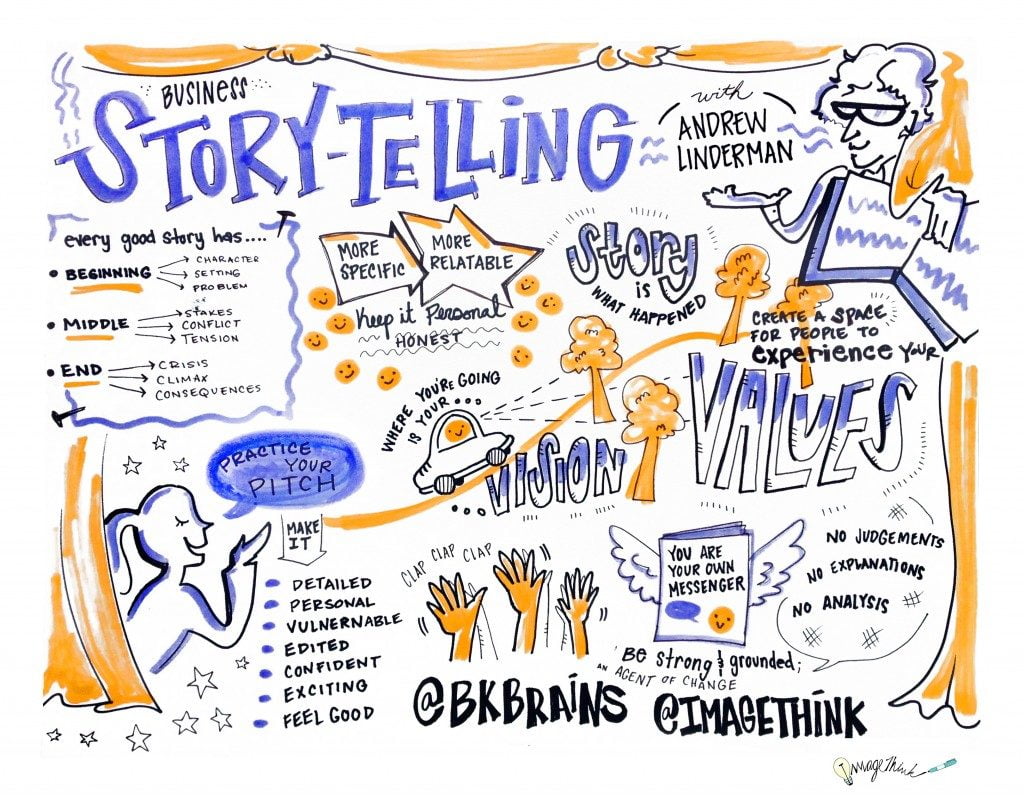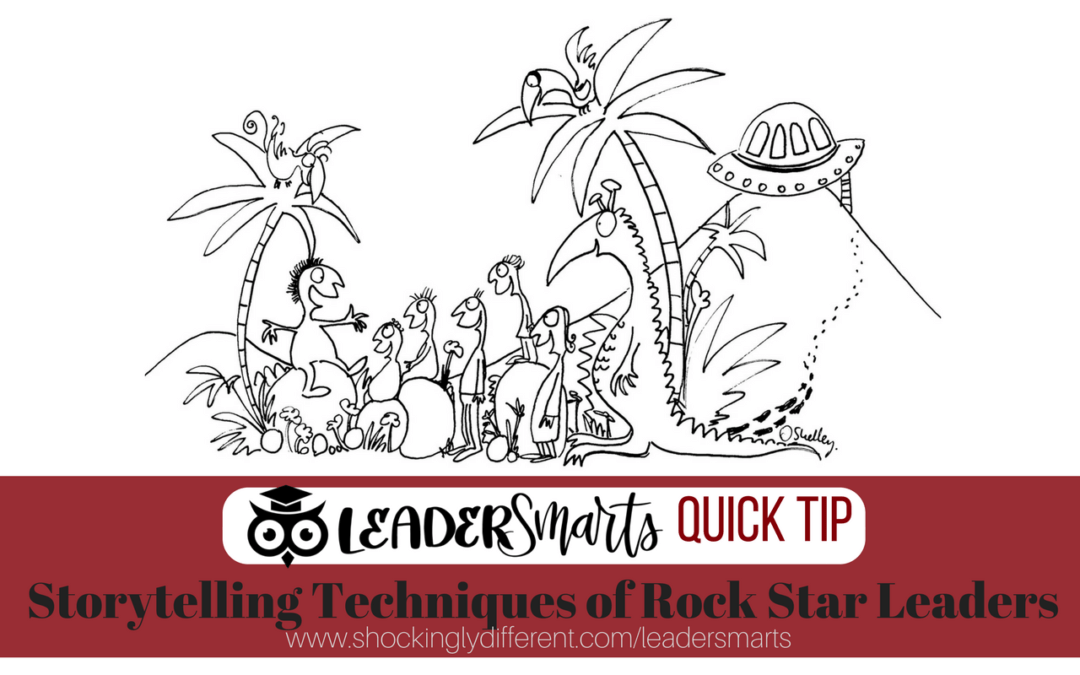Most experts agree that storytelling is one of the very best ways for our brain to process information. When you can easily understand information, it is easier to get excited to participate in a worthy cause. This storytelling lesson is priceless if you want to become a stronger leader.

Written by
Karan Rhodes
While it is natural to believe that facts and data will “wow” those listening to you, in fact it is the art of storytelling that is the secret power for leaders who are delivering key messages to their teams.
According to Paul J. Zak, founding director of the Center for Neuroeconomics Studies, “Storytelling blows the standard PowerPoint presentation to bits!”
According to SpeakerHub, a leading authority on public speaking, there are 3 elements to a great story.
- Great stories are personal: Want to capture the attention of your audience and get them on your side? Talk about your personal experiences. Explore ah-ha moments that you’ve had. Share what your path to success looked like, what obstacles you faced, and which failures and mistakes you made along the way.
- Great stories have a purpose: Have a very clear idea about your main point that you are sharing and what you want your audience to get out of it.
- Great stories appeal to your senses: If your audience can’t visualize what you are talking about, they will be lost and bored.

4 Storytelling Approaches for Rock Star Leaders
Here are 4 kinds of storytelling approaches which will improve your leadership acumen (specifically your Executive Presence competency)
 The Hero’s Journey: This is one of the oldest ways to tell a story, and revolves around a character going off into the world, facing a challenge or series of challenges, discovering something, and returning back home with their new found wisdom.
The Hero’s Journey: This is one of the oldest ways to tell a story, and revolves around a character going off into the world, facing a challenge or series of challenges, discovering something, and returning back home with their new found wisdom.
Use it to:
- Entertain your audience while enlightening them
- Promote courage and risk taking
- Share wisdom


The False Start: You make the story seem like it will have a predictable outcome (like the success of a project) but then, it doesn’t. For whatever reasons, things do not go as planned and you have to go back to start and say what you did differently (successfully) the second time around.
Use it to:
- Disrupt the expectations of your audience
- Keep audience engaged, and offer them a surprise
- Illustrate the benefit of flexible approaches
 The Mountain: Everything leads up to one pinnacle moment: the climax (the top of the mountain.) Once the climax is hit, the end of the story comes swiftly. This structure is very popular for keeping your audience engaged.
The Mountain: Everything leads up to one pinnacle moment: the climax (the top of the mountain.) Once the climax is hit, the end of the story comes swiftly. This structure is very popular for keeping your audience engaged.
Use it to:
- Illustrate challenges
- Offer clear conclusions and results to big moments or events
- Build tension and keep the audience engaged

 The Dreamer: You create a contrast between the ordinary, everyday world with an ideal, improved world. You immediately show how adopting a new method or way of thinking can create change.
The Dreamer: You create a contrast between the ordinary, everyday world with an ideal, improved world. You immediately show how adopting a new method or way of thinking can create change.
Use it to:
- Generate excitement and hope around an idea
- Motivate your audience
- Incite action

Effective storytelling is a hard skill to build. Although I coach my clients on effective storytelling, I find that I have to work on my own storytelling skills everyday. If you want to be perceived as more influential, using the power of storytelling will be key to motivating others to follow your lead.
Becoming storytelling-savvy helps to develop your Executive Presence leadership competency, 1 of the 7 competencies that will ultimately help you “lead at the top of your game.”



